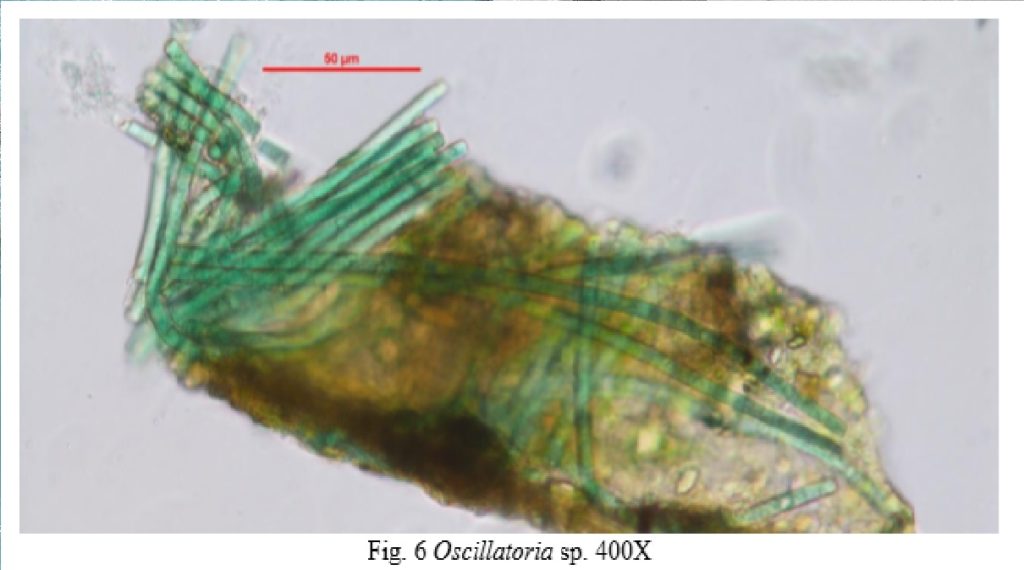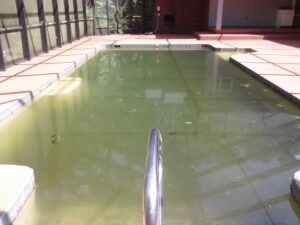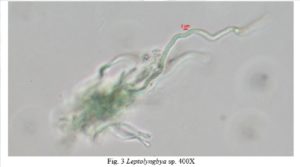MICROCYSTIN RESULTS

Due to the level of chlorine in our sample, testing the pool water for microcystin would be futile. If the Oscillatoria sp. found in our “black algae” specimens were actually toxin excreting, the disinfectant (even at the low end of the acceptable range: 1 ppm), we hypothesize, would likely oxidize the hepatotoxins upon production (further testing required). This does not mean we are unable to test our specimens for toxins, only that we would be unable to test the water for such.

As we had mentioned previously, cyanobacteria that are associated with toxins extricate toxins in one of two methods. Either the prokaryote generates toxins, or it releases toxins when lysed (cell membrane is ruptured). Though the chemistry of the swimming pool water will thwart efforts to confirm continuous excretion of microcystin, we may still be able to detect if toxins are released due to lysis. To do this, the chlorine would first need to be neutralized. This would be done prior to testing with either ascorbic acid or sodium thiosulfate. Here we would choose ascorbic acid.

Description: Data deposited in or computed by PubChem
Cyanobacteria release toxins upon cell death or lysis. When released, toxins may persist for weeks to months…Most microcystins are hepatotoxins (liver toxins)…While the liver is the primary target of microcystins, it is also a skin, eye and throat irritant – Water Treatability Database/ US EPA
Results from our analytical workup:

The Assay value in our test results (above) show that a positive test was achieved indicating that a trace level of microcystin was detected in our specimens. However, at 0.08 ng/mL (parts per billion); the level detected by the ELISA in our samples is much lower than the benchmark of 0.15 ppb (shown). The amount detected is also far below the EPA Drinking Water Health Advisory (HA) maximum recommended level of 1.6 micrograms per liter (ppb).
As discussed in our article Not All Black Algae is Created Equal ⚖ and then again in ☣ Does Black Algae Produce Toxins?, we will need to understand that the likelihood of the presence of trace toxins will need to be considered on a case to case basis. Remember, we found the inhabitants of “black algae” to vary by geographic location and though all “black algae” will have cyanobacteria as the dominant constituent, not all cyanobacteria found in “black algae” will be known to be cyanotoxin producing. Then consider that environmental factors may also play a role in whether a known toxin producing genus actually is toxin producing. It is then safe to assume that the specific genus discovered, as well as the abundance of the prokaryote, will determine the level of toxin present – if any at all.
As Dr. Goeres (Center for Biofilm Engineering, Montana State University) had commented on our findings in Not All Black Algae is Created Equal ⚖, “the best approach may be tailored treatment plans that are optimized for each pool similar to the “personalized medicine” trend”. The same philosophy of treating colonization as individuals for treatment will also pertain to the likelihood of the presence of toxins, and then toxin type. “Black Algae” may always look the same, but each colony is actually as unique as your fingerprint.
Cyanotoxins can be classified into categories that reflect their biological effects on the systems and organs that they affect most strongly. Each cyanotoxin can be produced by more than one cyanobacterial species; likewise, several toxins can be found within the same species – Cyanotoxin Fact Page, Center for Earth and Environmental Science, Indiana University – Purdue University, Indianapolis
Our May 2018 discovery that sent us down this path: The Black Algae Myth





